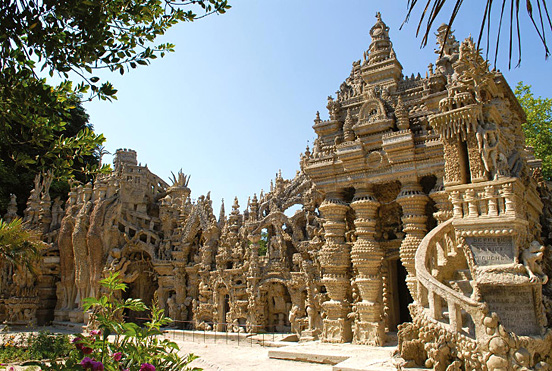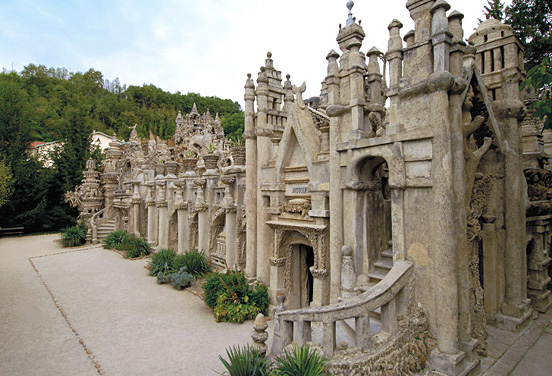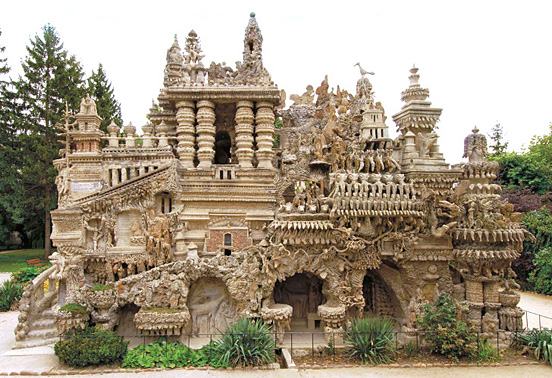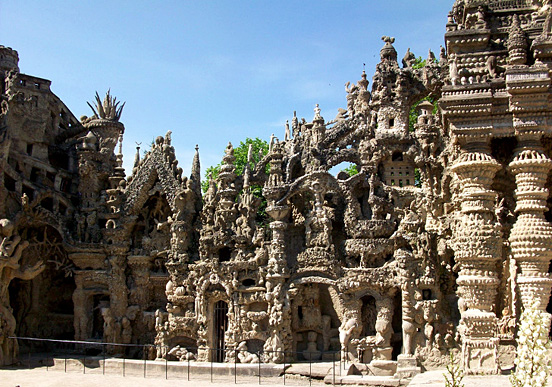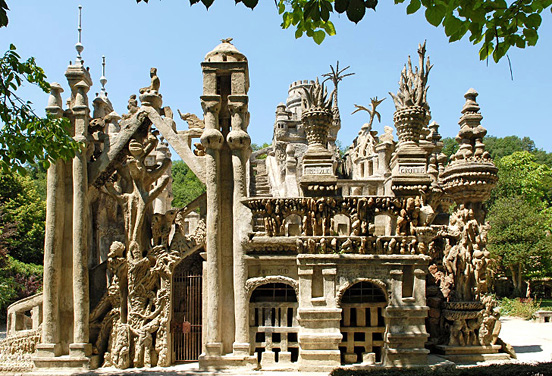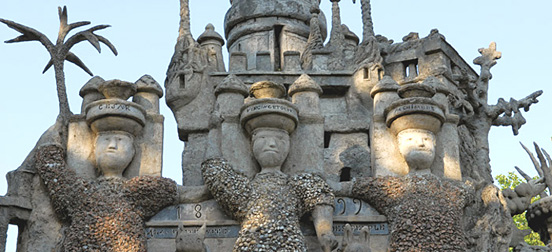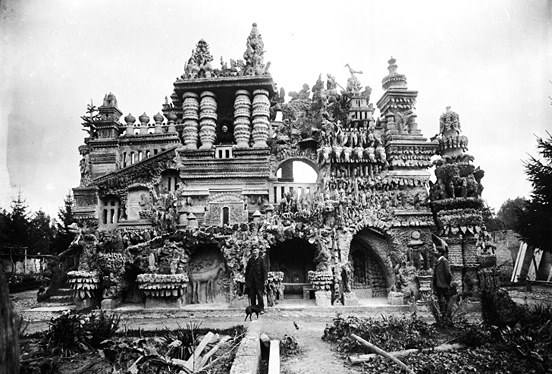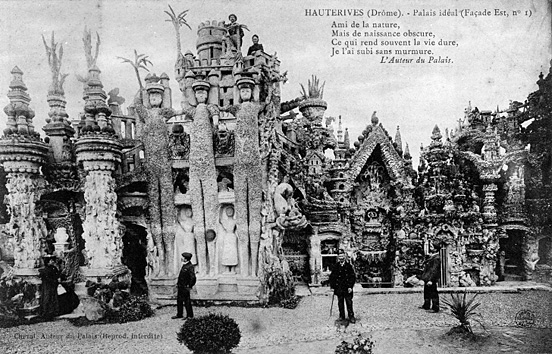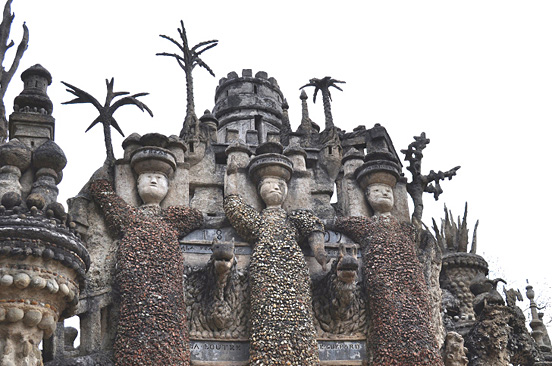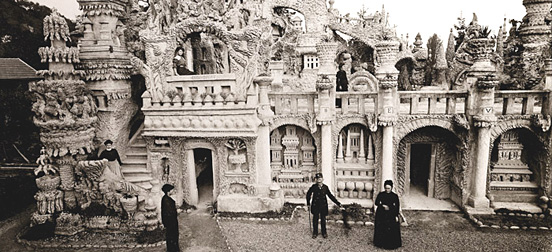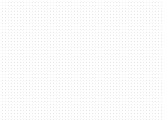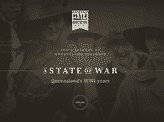In 1879, a postman named Ferdinand Cheval tripped over an unusual rock while doing his rounds near Hauterives, France and became inspired to build something truly remarkable. Over the next 33 years, he gathered more and more rocks and pebbles as he completed his 18-mile daily route, and in the evenings he mixed them with lime and concrete to build the Palais Idéal. The resulting structure is as strange as it is beautiful, and it inspired a generation of Surrealists and became a revered example of Outsider Art.
Cheval’s design and decorative flourishes were inspired by nature, and the postcards and early examples of illustrated magazines that he delivered. The similarities to some of GaudÃ’s work are also undeniable. Details include animals such as octopuses, hind, caimans, camels, elephants, pelicans, bears, and birds, as well as giants, fairies, and mythological figures sourced from all over the world. The influence of Hindu and Christian architecture are evident, but Cheval had no formal training or affiliations with any artistic movements. In 1969, the Palais Idéal was classified as a Historical Monument and unique example of Naïve Architecture by the then French Minister for Cultural Affairs.







